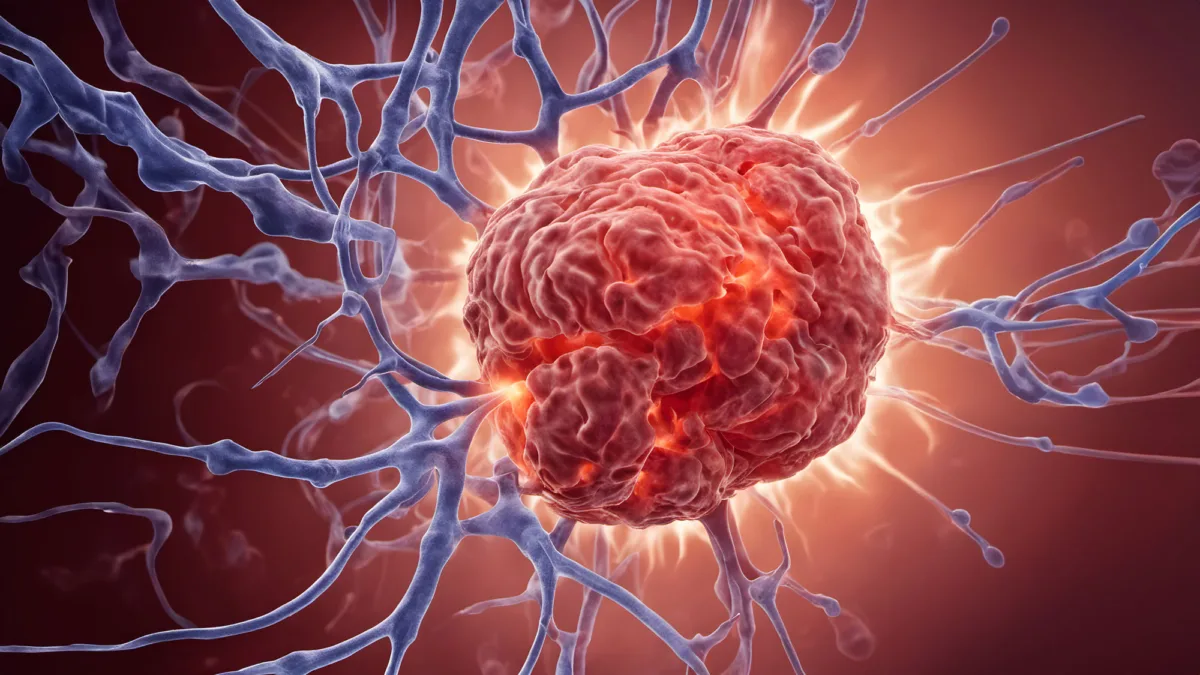Immunotherapy vs. Chemotherapy Side Effects: Comparing the Objectives
On August 4th, we posted an overview of how chemotherapeutic side effects differ from those experienced during immunotherapy. Informative, but broad, we decided to dive a little deeper into what really drives those effects and when they can even be beneficial.

Bad Gets Worse
Many cancer patients have to suffer not only the symptoms associated with the cancer, but then are additionally burdened by the undesirable side effects associated with a treatment plan. This almost epitomizes the idiomatic expression “kick them when they’re down,” and often even deters patients from attempting any therapy at all1, 2. Chemotherapy is generally thought of as having the worst side effect profiles, which is not surprising given the paradigm with which it operates (e.g., let us poison the body and hope the cancer cells die before the healthy cells). Some of these side effects can even be permanent3, 4.
Pointless Chemotherapy Side Effects
Because most chemotherapies are designed to inhibit cellular function and replication, healthy cells with normal functions often get caught in the crosshairs. Thus, some side effects experienced include a destroyed immune system (leading to more infections), hair loss, fatigue, loss of ability to absorb and metabolize nutrients (which leads to a loss of appetite, constipation, diarrhea, nausea, and vomiting), changes associated with skin due to inhibition of cellular debris replenishment, and even changes in taste due to effects on rapidly dividing taste buds5. These harsh chemicals can cause nerve damage, leading to unwanted pain and difficult sensations that can unfortunately be long-term6. Women may lose the ability to carry a pregnancy to term7, and men may end up impotent8. And potentially worst of all is a realization that none of these side effects are actually linked to whether or not there will be the desired effect on the cancer cells themselves!
Pointed Immunotherapy “Side” Effects
Immunotherapy is a category of treatment aimed at empowering a patient’s own immune system to function correctly and/or against the cancer, and this should immediately be understood to be more within a biological realm9. There are subcategories within immunotherapy, some of which are based on ‘artificial hijacking of immune system capabilities’ while others are ‘physiological immune empowerment.’ Regardless of choice, the side effects are typically going to be within the realm of an immune response. This may include fatigue, fever, chills, nausea, vomiting, headache, swollen lymph nodes, tenderness, aches, and the sort10. The more artificial the immunotherapy (e.g., such as a checkpoint inhibitor before any proper immune education), the harsher and more off-target the side effects may be. Even still, these symptoms usually pale in comparison to the severity often experienced with many chemotherapy regimens.
With a physiological immunotherapy, such as the one-of-a-kind Dendritic Cell treatment offered by Immunocine, the side effects are debatably not side effects at all, but rather effects. With no artificial hijacking of the immune system (e.g., CAR-T, checkpoint inhibitors) or artificial stimulation (e.g., Coley’s toxins, LPS, BCG, virus, etc.), any immune related symptoms are directly related to the immune system’s response to the cancer. As that thought settles in, a unique advantage becomes clear. Whereas side effects to chemotherapy are not-informative and simply have to be accepted and dealt with, side effects to a therapy such as Immunocine’s are extremely informational and even beneficial in the patient’s fight against cancer. In general, the severity and extent of any “side” effect then is more dictated by the amount and location of the cancer, rather than the amount or type of treatment given. One of those is actually your body working correctly, while the other is your body breaking down.
Immunocine “Side” Effects
Specific to Immunocine, the currently most reported side effect is ‘fatigue’ which occurs roughly 68% of the time after a Dendritic Cell injection. This makes sense though, as your body is consuming energy to ramp up an immune response (rather than chemo-induced fatigue in which your body is just exhausted trying to survive). Other top side effects include ‘tumor pain,’ headache, bloating, and vaccine-site lymphadenopathy (e.g., enlargement of lymph nodes), and are typically between a grade 1 (mild to asymptomatic with no intervention needed) and grade 2 (moderate; minimal, local, or noninvasive intervention may be helpful).
Information is Broad, but Decisions are Personal
None of this is to say that in any one patient chemotherapy cannot exert minimal adverse issues, or that immunotherapy could not be quite dangerous and cause more severe symptoms. Cancer is a diverse and confounding variable interwoven within a biologically unique environment. However, based on outcomes generally experienced by the population as a whole, we are able to analyze and understand side effects to various treatments and inform future decisions. As we continually encourage, make sure your decisions are always informed and that you do what is best for you and yours.
References
1. Frenkel, M. Refusing treatment. Oncologist 18, 634-636 (2013).
2. Dias, L.M., Bezerra, M.R., Barra, W.F. & Rego, F. Refusal of medical treatment by older adults with cancer: a systematic review. Ann Palliat Med 10, 4868-4877 (2021).
3. Feeney, G. et al. Neoadjuvant radiotherapy for rectal cancer management. World J Gastroenterol 25, 4850-4869 (2019).
4. Azim, H.A., Jr., de Azambuja, E., Colozza, M., Bines, J. & Piccart, M.J. Long-term toxic effects of adjuvant chemotherapy in breast cancer. Ann Oncol 22, 1939-1947 (2011).
5. Altun, I. & Sonkaya, A. The Most Common Side Effects Experienced by Patients Were Receiving First Cycle of Chemotherapy. Iran J Public Health 47, 1218-1219 (2018).
6. Staff, N.P., Grisold, A., Grisold, W. & Windebank, A.J. Chemotherapy-induced peripheral neuropathy: A current review. Ann Neurol 81, 772-781 (2017).
7. Duffy, C. & Allen, S. Medical and psychosocial aspects of fertility after cancer. Cancer J 15, 27-33 (2009).
8. Madan, R., Dracham, C.B., Khosla, D., Goyal, S. & Yadav, A.K. Erectile dysfunction and cancer: current perspective. Radiat Oncol J 38, 217-225 (2020).
9. Velcheti, V. & Schalper, K. Basic Overview of Current Immunotherapy Approaches in Cancer. Am Soc Clin Oncol Educ Book 35, 298-308 (2016).
10. Kichloo, A. et al. Systemic adverse effects and toxicities associated with immunotherapy: A review. World J Clin Oncol 12, 150-163 (2021).
READ THIS NEXT
Metastatic Melanoma: A Deep Dive into the Aggressive Form of Skin Cancer
Melanoma, a type of skin cancer, can be a frightening diagnosis. But within the spectrum of melanoma, metastatic melanoma stands out as part
Read MoreWhy don’t Checkpoint Inhibitors Work More Often?
With immunotherapy really taking off in the past decade, many cancer patients are rightfully interested in adding this potential modality to
Read MoreTriumph Over Stage 4 Melanoma: Brock’s Inspiring Journey
Brock had his world turned upside down when he was diagnosed with Stage 4 Melanoma in July 2022. With his cancer growing by 300% within five
Read More















